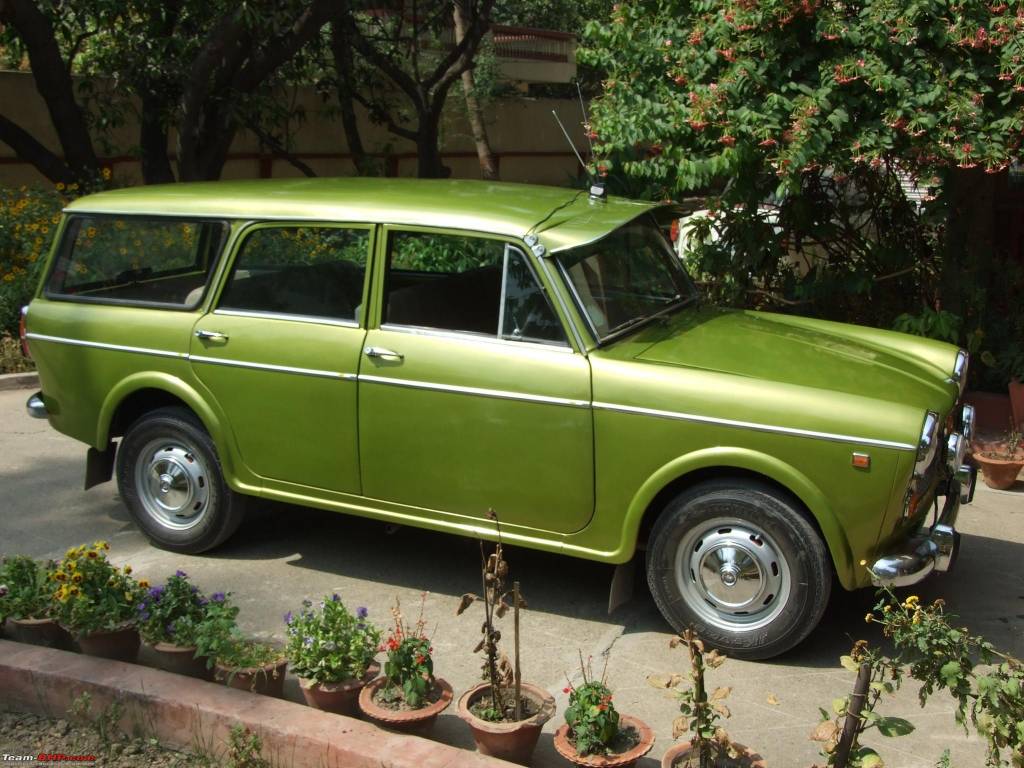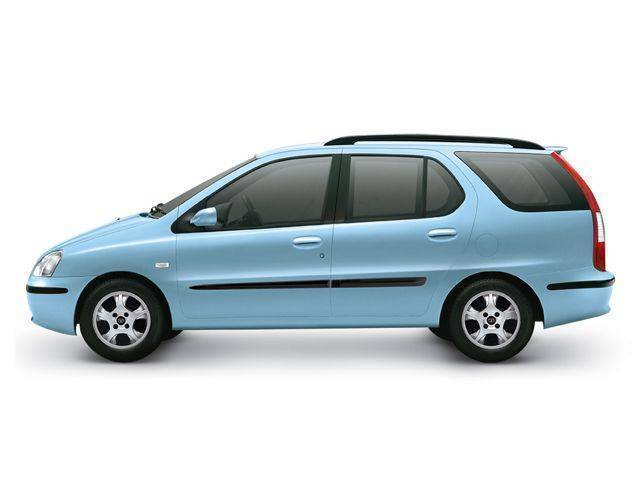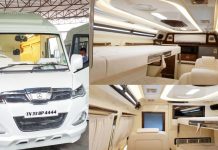A Look at forgotten station wagons in India
Look at the cars in India today, there’s almost every manufacturer present in the country and various body styles are available. With the advent of numerous sedans and SUVs, we aren’t just a hatchback preferring country anymore. Then there are various crossovers too, from entry-level SUV styled cars to premium SUVs that actually mimic a coupe form. There is, however, one body style that is actually quite practical than most but for some reason hasn’t seen a lot of success in India. It’s called the estate or station wagon.
On paper, a station wagon is basically a vehicle based on a sedan/saloon with access to the rear cargo area via a tailgate instead of a boot lid. While not many examples of it are seen presently in the Indian market, there were a few which existed earlier in various automobile eras. We take a look at all of them, well let us know if we missed out on any.
Premier Padmini Safari
 The Premier Padmini Safari originally started the trend of station wagons in India. It was not officially manufactured by Fiat India but by a coach building company called Starline Motors based in Bhandup, Mumbai. Incepted in 1973, the Padmini Safari was the first estate car based on the Fiat 1100. It was far more practical and functional than the regular sedan but lacked fit and finish. Aesthetically, the tailgate with the large windshield did not sync with the overall design. Powering the Premier Padmini Safari was a 40PS four-cylinder petrol motor. Later, Starline Motors also launched an extended wheelbase version of the Padmini Safari christened as SAB25 which resembles the 118NE with its rectangular headlights and tail lights.
The Premier Padmini Safari originally started the trend of station wagons in India. It was not officially manufactured by Fiat India but by a coach building company called Starline Motors based in Bhandup, Mumbai. Incepted in 1973, the Padmini Safari was the first estate car based on the Fiat 1100. It was far more practical and functional than the regular sedan but lacked fit and finish. Aesthetically, the tailgate with the large windshield did not sync with the overall design. Powering the Premier Padmini Safari was a 40PS four-cylinder petrol motor. Later, Starline Motors also launched an extended wheelbase version of the Padmini Safari christened as SAB25 which resembles the 118NE with its rectangular headlights and tail lights.
Hindustan Ambassador

Hindustan Motors launched the Ambassador in 1958 after getting a license from Morris Motors Limited. It was discontinued two years back, making it one the longest production cars in India. HM manufactured the Ambassador at the Uttarpara plant in, West Bengal. In the early 70s, Hindustan Motors offered a station wagon based on the sedan similar to the Oxford Traveller. The front was identical to the sedan, however, after the C-pillar, it had an extended roofline. This was HM’s way of showcasing the versatility of the Ambassador’s platform and the different options that could be churned out which also included a pick-up, ambulance and a delivery van
Tata Estate

Launched in 1992, the Estate was Telco’s (Tata Motors now) first attempt at making a proper passenger car. Banking on the company’s image of being one of the important players in the heavy-vehicle segment, the Tata Estate was a unique offering for its time. It came equipped with features like power windows, power steering, 15-inch wheels as well as a tachometer. Among positives, it had spacious, wide seats that comfortably seated five occupants. The larger greenhouse area brightened the cabin also contributing to the spacious feel. Even though it was a fairly large vehicle, the Estate was easily manoeuvrable in the city. On highways too, it put out decent levels of performance. However, the Tata Estate could not do well in India. Reasons included reliability, inefficient air-conditioning considering it featured a large cabin and a not so eager 68PS diesel motor.
Sipani Rover Montego

Britain’s Rover Motors entered India with a tie-up with Bangalore-based Sipani Automobiles Ltd. The company launched a station wagon called the Rover Montego in 1993. The Rover Montego had an international design back then and was definitely an attractive car. It was also popular for its list of features which include sunroof as well as self-levelling suspension. The Rover Montego was powered by a turbocharged (first in India) 1,991cc diesel motor that produced 80PS of power and 165Nm of torque. However, the venture failed to attract major sales in India with poor sales performance. Sipani Group was compelled to shut shop and close all operations across the country in 1997.
Opel Corsa Swing

General Motors entered India in 1996 under the Opel brand. Post the success of the Astra sedan, Opel launched Corsa in 2000. The Open Corsa Swing, which was an estate version based on the sedan, arrived in 2003. The Corsa Swing was one of the smartest looking station wagons in India. In addition, it also offered a spacious cabin with a generous boot space. Since it shared platform with the Corsa, the Swing with its 1.6-litre 93PS motor was an impressive offering. Additionally, Corsa Swing owners still vouch for its notable ride quality. Despite the added length, the car didn’t lose out on nimble handling seen in the Corsa hatch and sedan. However, the Corsa Swing was discontinued in 2006 with the end of Opel and formation of General Motors.
Maruti Baleno Altura

After the success of its mass-market offerings like the 800, Esteem, 1000 and Omni, Mauti Suzuki took the plunge and entered into the premium sedan segment with the Baleno. Considered as an offering that was ahead of its time, the Baleno did contribute in changing the brand’s perception. Following the sedan, Maruti Suzuki added the Baleno Altura in its line-up in 2001. Competing with the likes of the Honda City, Ford Escort, Opel Astra and even the Mitsubishi Lancer, the Baleno Altura was backed by Maruti Suzuki’s strong brand presence. However, it also had to face competition from the Opel Corsa Swing and Fiat Palio Weekend. An upmarket design and a well-equipped cabin were some of its highlights. Maruti Suzuki discontinued the Baleno Altura in 2007. Most Altura parts were imported and this makes it harder to maintain than its sedan sibling.
Skoda Octavia Combi

One of the most stunning station wagons in India was the Skoda Octavia Combi. Based on the Octavia sedan, the Combi was seen as a perfect alternate for someone looking for a large, safe family car with a power engine. Powering the Skoda Octavia Combi was a 1.9TDI motor for the regular model. Available in L&K trim, the Octavia Combi came with some of the most premium features and options. However, if performance was the main concern, Skoda also offered the Octavia Combi vRS with a 1.8-litre turbo petrol motor (it is still one of our favourite estate cars by far). The claimed max speed for the Octavia vRS was 213kmph with a power rating of 157PS and a torque output of 210Nm.The Octavia Combi vRS was manufactured at the Aurangabad plant along with the sedan in India from 2002 to 2010.
Fiat Palio Weekend/Adventure

The Fiat Weekend was the first official station wagon from Fiat in India. Based on the Palio platform, the Fiat Weekend was launched in India in 2002. It was seen as a spacious alternative to the Sienna sedan. Designed by the legendary Italian automobile designer Giorgetto Giugiaro, the overall design of the Palio Weekend looked much in proportion. The Fiat Weekend was manufactured at the company’s Ranjangaon plant. Fiat offered the Palio Weekend with a 1.4-litre fire petrol and a 1.3-litre multijet diesel engine. While the Palio Weekend had a more functional design, Fiat later also introduced the Palio Weekend Adventure. This one featured plastic cladding and looked sportier than the standard Weekend model.
Tata Indigo Marina

In 2006, Tata launched the Indigo Marina based on the underpinnings of the Indigo sedan in India. The offerings based on the Indica platform was in a way inspired by Fiat’s project 178, where one platform spawned various body styles (hatchback, sedan, estate, pick-up). Even though the Estate couldn’t do well for Tata Motors, the Indigo Marina was indeed a brave attempt. Similar to the other station wagons, the Tata Indigo Marina was a spacious offering. However, poor build quality and an underperforming engine with low fuel efficiency were some of the prime reasons for it to fail in India. The Indigo Marina was offered with a choice of a 1.4-litre petrol and diesel engines. Tata Motors discontinued the Indigo Marina in 2010.



















